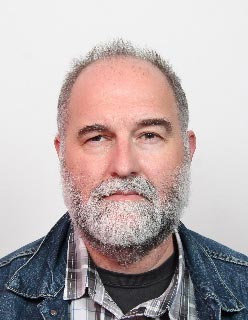Overview
Prof Dragan Poljak from the University of Split, Croatia, presented a three-day online course on Human Exposure to Electromagnetic Fields to a group of participants from the United States and the United Kingdom.
The course aimed to cover several aspects of human interaction with non-ionizing electromagnetic fields (EMF) including not only the undesired exposure from artificial sources but also the biomedical applications of electromagnetic fields. The course dealt with basic aspects of electromagnetic fields in the environment, coupling mechanisms between humans and electromagnetic fields, established biological effects of electromagnetic fields from static to high-frequency range, international safety guidelines related to limiting human exposure to those fields, including relevant exposure limits and safety guidelines, electromagnetic-thermal dosimetry models and the related analytical/numerical solution methods.
Illustrative examples included analysis of power lines, transformer substations, PLC systems, RFID antennas, wireless power transfer (WPT) systems and radio base stations pertaining to 2G/3G/4G and 5G mobile communication systems.
This was followed by some examples of biomedical applications of electromagnetic fields, including transcranial magnetic stimulation (TMS), transcranial electrical stimulation (TES), and also some electrotherapy and magnetotherapy techniques. In addition, some illustrative computational examples pertaining to thermal modelling of certain ophthalmological procedures were given.
Finally, the last part of the tutorial dealt with the stochastic modelling of electromagnetic fields. As input parameters of models used in bioelectromagnetism and electromagnetic dosimetry suffer from inherent uncertainty they were treated as random variables.
Course Sessions
The course covered the following topics:
- Exposure of Humans to Electromagnetic Fields – General Considerations
- Introduction to Computational Electromagnetics (CEM)
- Incident Electromagnetic Field Dosimetry
- Internal dosimetry – Simplified models of the Human Body
- Internal dosimetry – Realistic Models for Static and Low Frequency (LF) Dosimetry
- Internal electromagnetic-thermal dosimetry – Realistic Models for Human Exposure to High Frequency (HF) Radiation
- The Human Eye Exposure, The Brain Exposure, The Human Head Exposure, The Whole Body Exposure, Thermal Dosimetry Procedures
- Biomedical Applications of Electromagnetic Fields
- Stochastic Bioelectromagnetics
- Hot topics – Human Exposure to 5G communication systems: Incident and Internal Dosimetry Procedures
Presenter

Dragan Poljak received his PhD in Electrical Engineering in 1996 from the University of Split, Croatia. He is Full Professor in the Department of Electronics and Computing, University of Split. His research interests are oriented to computational electromagnetics (electromagnetic compatibility, bioelectromagnetics and plasma physics). To date, Prof Poljak has published more than 160 journal and 250 conference papers, and authored some books, e.g. two by Wiley, New Jersey and one by Elsevier, St Louis. He is a Senior Member of IEEE, a member of the Editorial Board of Engineering Analysis with Boundary Elements, Mathematical Problems in Engineering and IET Science Measurement and Technology. He was awarded by several prizes for his research achievements, such as National Prize for Science (2004), Croatian section of IEEE annual Award (2016), Technical Achievement Award of the IEEE EMC Society (2019) and George Green Medal from the University of Mississippi (2021). From May 2013 to June 2021 Prof Poljak was a member of the board of the Croatian Science Foundation. He was involved in ITER physics EUROfusion collaboration and he is currently involved in DONES EUROfusion collaboration and in the Croatian center for excellence in research for tech. sciences. He is active in a few Working Groups of IEEE/Internat. Committee on Electromagnetic Safety (ICES) Technical Committee 95 SC6 EMF Dosimetry Modeling.
For further information and details of the next event please contact:
Jane Chantler
Wessex Institute
Ashurst Lodge, Ashurst
Southampton, SO40 7AA
Tel: 44 (0) 238 029 3223
Fax: 44 (0) 238 029 2853

 Wessex Institute
Wessex Institute